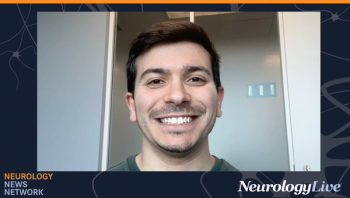
AAN Calls for Uniform Determination of Brain Death
The position statement’s author noted that a lack of specificity in laws and inconsistencies in protocols has led to confusion surrounding brain death in several high-profile cases.
James Russell, DO, MS
The American Academy of Neurology (AAN) has published a position statement, endorsed by the American Neurological Association and the Child Neurology Society, calling for uniform laws, policies, and practices on brain death.1
The current standards for both adult and pediatric patients, widely accepted by the medical community, include the AAN’s 2010 “Evidence-Based Guideline Update: Determining Brain Death in Adults” and the 2011 “Guidelines for the Determination of Brain Death in Infants and Children” published by the Pediatric Section of the Society of Critical Care Medicine, the Sections of Neurology and Critical Care of the American Academy of Pediatrics and the Child Neurology Society.
“The AAN believes that a specific, uniform standard for the determination of brain death is critically important to provide the highest quality patient-centered neurologic and end-of-life care,” position statement author James Russell, DO, MS, of Lahey Hospital and Medical Center, said in a statement. “The AAN supports the development of legislation in every state modeled after the Nevada statute, which specifically defers to these current adult and pediatric brain death guidelines and any future updates.”
Despite the lack of a known case of inaccurate determination of death with the return of any brain function, such as consciousness, brainstem reflexes, or breathing, Nevada remains the only US state which has adopted legislation requiring the use of these guidelines as medical standard, authorized by the model Uniform Determination of Death Act (UDDA). Nevada adopted the guidelines as such in May 2017 with its Assembly Bill 424.2
Although, some have been critical of Nevada’s law. In April 2018, a group of Greg Yanke, JD, MS, MBA; Mohamed Y. Rady, MD, MB, BChir; and Joseph L. Verheijde, PhD, MBA, PT, penned a perspective in the Journal of Bioethical Inquiry regarding their concern surrounding the amendments to the Nevada law.3
“Even though the primary purpose of the UDDA is to ensure that all functions of a person’s entire brain have ceased, the AAN guidelines do not accurately assess this,” they wrote. “In addition, by characterizing the determination of death as solely a clinical decision, the Nevada legislature has improperly ignored the doctrine of informed consent, as well as the beliefs of particular faiths and cultures that reject brain death. Rather than resolving controversies regarding brain death determinations, the Nevada amendments may instead instigate numerous constitutional challenges.”
Yanke et al. pointed to the lack of an international consensus regarding brain death as a major challenge in its diagnosis, using the contrast between the United Kingdom’s requirement—clinical examination of brainstem reflexes and an apnoea test without other confirmatory tests—and China’s requirement—that at least 2 of 3 tests: an electroencephalograph (EEG), a transcranial Doppler, and a somatosensory evoked potential—must be conducted as example.
Additionally, they pointed to Nevada’s desire to resolve uncertainty following a high-profile case by amending their legislation to include the AAN guidelines, noting that “in doing so, Nevada has raised more legal issues than it has solved, particularly given its impact on patient and religious rights.”
Russell, a fellow of the AAN and chair of its Ethics, Law and Humanities Committee, said in a statement that a failure to provide specificity the majority of states’ laws, as well as inconsistencies among the brain death protocols of medical facilities across the country, has led to the differing of interpretation of the definition of brain death in some of these high-profile cases. “The AAN wants the general public to know that when these guidelines are followed, the result is an accurate determination of brain death,” he said.
Currently, brain death is defined as “the death of the individual due to irreversible loss of function of the entire brain. It is the equivalent of circulatory death, which is due to irreversible loss of function of the circulatory system, which includes the heart,” according to the Academy.
The AAN’s position statement4 additionally is in support of the development of initiatives to train and credential physicians that determine death by neurological criteria—brain death—and that provide public and professional education regarding brain death and its determination.
“Recognizing that each case is unique, the AAN position statement also provides guidance to medical professionals when a family may not accept a determination of death of their loved one due to religious, moral or cultural reasons, and requests continued life support. The position statement states that continuing to provide life support when a person is dead may deprive that person of dignity or provide false hope to the family,” the Academy explained.
REFERENCES
1. AAN Calls for Uniformity of Brain Death Determination [press release]. Minneapolis, MN: AAN; Published January 2, 2019. aan.com/PressRoom/Home/PressRelease/2687. Accessed January 4, 2019.
2. Chereb S. Nevada adopts national brain death guidelines under bill. Las Vega Review-Journal. Updated May 8, 2017. reviewjournal.com/news/2017-legislature/nevada-adopts-national-brain-death-guidelines-under-bill. Accessed January 4, 2019.
3. Yanke G, Rady MY, Verheijde JL. Ethical and legal concerns with Nevada’s brain death amendments. J Bioethic Inq. 2018;15(2):193—198. doi: 10.1007/s11673-018-9852-y
4. Russell JA, Epstein LG, Greer DM, Kirschen M, Rubin MA, Lewis A. Brain death, the determination of brain death, and member guidance for brain death accommodation requests. Neurology. Published online January 2, 2019. doi: 10.1212/wnl.0000000000006750
Newsletter
Keep your finger on the pulse of neurology—subscribe to NeurologyLive for expert interviews, new data, and breakthrough treatment updates.


























